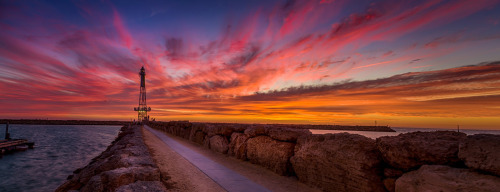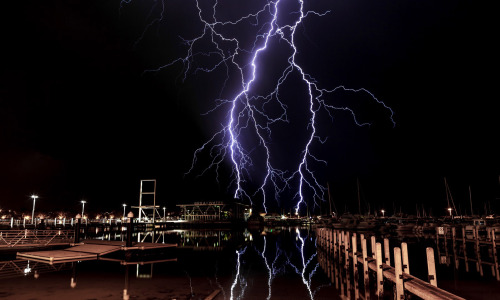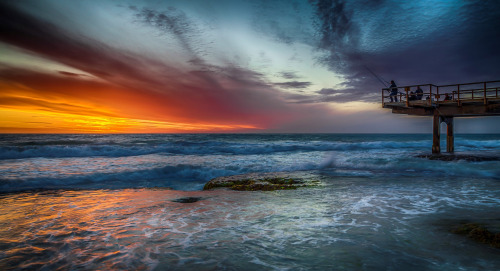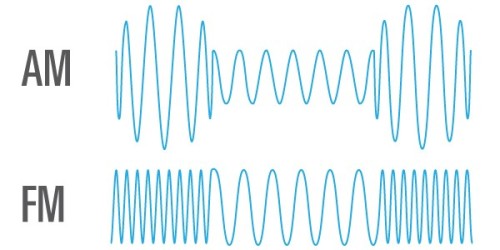Marvel & DC Ultralight







Marvel & DC Ultralight
By Bunka
More Posts from Thekrishankumar and Others

The Painted Surfer by Toby Harriman Via Flickr: North Shore Hawaii.



Storm chaser down under
A British photographer made the lightning decision to quit the UK to chase storms Down Under and was rewarded with these striking shots. Oliver Kay, 40, left his dead-end IT job in Manchester almost a decade ago with wife Helen in search of a new life in Perth, Western Australia. He mixes a job with one of Perth’s biggest mining companies with his weekend passion of photography. And Oliver struck gold after being woken up by thunder at 3.30 in the morning and taking amazing pictures of lightning filling the sky above Hillary’s Marina in his adopted home city. (Caters News) Photography by Oliver Kay
See more storm photos and our other slideshows on Yahoo News.
Five Ways Your Holidays Might Be Similar to the Crew on the Space Station
The holiday season is here! You might think that your celebrations are WAY different than what is done on the International Space Station, but you might be surprised…Here are a few ways your holidays might be similar to the crew on the space station:
1. You’re Instagramming All Your Decorations

Yep! Just like on Earth, the space station crew has the capability to use social media while on orbit. If you don’t follow them, you should check it out and get an out of this world perspective of what life is like on the International Space Station. (Expedition 34 crew members assemble in the Unity node of the space station for a brief celebration of the Christmas holiday on Dec. 24, 2012.)
2. You Have to Make Sure to Call Your Relatives

You don’t want to forget to wish Aunt Sue “Happy Holidays”, she might not send you a gift next year! The crew on the space station have the ability to talk to their loved ones every day. (Cosmonaut Mikhail Tyurin, and astronauts Michael E. Lopez-Alegria and Sunita L. Williams conduct a teleconference on Dec. 25, 2006.)
3. The Family Photos Never Seem to End

The crew on the station might not be related by blood, or even country of birth, but they share living space, meals and time together just like a family on Earth. And when it comes to the holidays, you bet they’ll be snapping pictures to capture the moments. (The six Expedition 30 crew members assemble in the U.S. Lab aboard the space station for a brief celebration of the Christmas holiday on Dec. 25, 2011.)
4. Meal Prep is a Task Shared by All

When you’re making food for multiple people, everyone needs to pitch in and help…the crew on the space station included! (Astronauts Michael Fincke, Sandra Magnus and cosmonaut Yury Lonchakov, pose for a photo as they prepare to share a Christmas meal on the space station on Dec. 25, 2008.)
5. Eating Cookies is a Must

What would the holidays be like without eating cookies? They even have the chance to eat them in space…pretty cool! (Astronauts Michael Fincke and Sandra Magnus hold Christmas cookies while posing for a photo near the galley on the space station on Dec. 25, 2008.)
For more pictures from the holidays on the International Space Station, check out our Flickr album: HERE.
Make sure to follow us on Tumblr for your regular dose of space: http://nasa.tumblr.com

AM & FM: How Radio Works
Lately I’ve been thinking about how the things I use every day actually work, and since I listen to a lot of podcasts, you can guess where this post is going: radio.
In a studio, a microphone converts sound waves from a person’s voice into an electronic audio signal. If this was sent out by itself, it would only travel a few metres in air before it faded out. To get radio waves to travel long kilometres to a receiver, we have to combine it with a “carrier wave”—an electromagnetic wave.
Electromagnetic waves are made up of oscillating electric and magnetic fields, just like visible light, but radio waves are right down on the lower end of the spectrum, so their wavelengths are very long—around 300 metres.

(Image Credit: NASA)
Sound information is combined with the wave by altering or modulating the wave’s properties, like changing its amplitude, frequency, or phase. There are two ways to combine the audio signal with the carrier wave: amplitude modulation (AM) or frequency modulation (FM).
AM radio changes the overall amplitude or strength of the wave, varying its height in order to incorporate the sound information. FM radio works a little differently, because it changes the frequency of the wave rather than the amplitude. The frequency is the number of wavelengths that pass by a given point per second—physically, a high frequency wave would look squashed up, and a low frequency wave would look stretched out.

(Image Credit: Wikimedia Commons)
Both kinds of waves are susceptible to variations in amplitude as they zoom off through the air, but since FM radio relies on changes in frequency rather than amplitude, these variations don’t matter—they can just be ignored, and so the sound quality is usually super clear. But AM radio relies on the amplitude to convey information, so when the amplitude is varied a bit, this results in interference or static, which will be a familiar idea if you’ve ever listened to AM radio on a rural country road. The upside of AM radio is that it travels much further than FM radio, which is probably why you’re listening to it on that rural country road in the first place.
So once these radio waves—whether AM or FM—hit a radio receiver, their oscillating fields induce a current in the conductor. The sound information encoded into the waves can be extracted, and converted back to sound waves to grace your ears with your favourite music or talk show.
(Bonus: if you want to use science to learn more cool science, my fave podcasts are Radiolab, the Infinite Monkey Cage, and Big Picture Science.)

A beautiful flower bed.

“This iPhone you’re interacting with isn’t a mysterious piece of magic that just appeared in your hands. Engineers designed it, and engineers made it, and everything that it does somebody had to figure out how to make.”
Chris Bradfield

'The Tallest Block in the World' (A vertical panorama of the Dubai Marina)
By Freddie Ardley Photography
Check out Freddie’s: Instagram Facebook Website







Photos of the day - November 6, 2014
A murmuration of starlings put on a display near the town of Gretna, Scotland, a riot police officer tries to spray demonstrators during clashes in central Brussels and a surfer performs an aerial as he rides a wave in the Atlantic Ocean at the Hoek in Cape Town, South Africa are some of the photos of the day. (AP/EPA/Getty/Reuters)
Find more news related pictures on our photo galleries page and follow us on Tumblr.

-
 thoseshadowsaresharks reblogged this · 8 years ago
thoseshadowsaresharks reblogged this · 8 years ago -
 akislam-blog liked this · 9 years ago
akislam-blog liked this · 9 years ago -
 waddupmitchie liked this · 9 years ago
waddupmitchie liked this · 9 years ago -
 kaasan64 liked this · 9 years ago
kaasan64 liked this · 9 years ago -
 kaasan64 reblogged this · 9 years ago
kaasan64 reblogged this · 9 years ago -
 tankthoughts reblogged this · 9 years ago
tankthoughts reblogged this · 9 years ago -
 tankthoughts liked this · 9 years ago
tankthoughts liked this · 9 years ago -
 ctrlaltfvck reblogged this · 10 years ago
ctrlaltfvck reblogged this · 10 years ago -
 thesatisfieddolphin liked this · 10 years ago
thesatisfieddolphin liked this · 10 years ago -
 boboguai reblogged this · 10 years ago
boboguai reblogged this · 10 years ago -
 boboguai liked this · 10 years ago
boboguai liked this · 10 years ago -
 gomordo reblogged this · 10 years ago
gomordo reblogged this · 10 years ago -
 sauce reblogged this · 10 years ago
sauce reblogged this · 10 years ago -
 potsunenist reblogged this · 10 years ago
potsunenist reblogged this · 10 years ago -
 la-entrada-cuesta-la-razon reblogged this · 10 years ago
la-entrada-cuesta-la-razon reblogged this · 10 years ago -
 la-entrada-cuesta-la-razon liked this · 10 years ago
la-entrada-cuesta-la-razon liked this · 10 years ago -
 lostzerocool liked this · 10 years ago
lostzerocool liked this · 10 years ago -
 amzeel liked this · 10 years ago
amzeel liked this · 10 years ago -
 rocketscribble liked this · 10 years ago
rocketscribble liked this · 10 years ago -
 richandstrangephotography reblogged this · 10 years ago
richandstrangephotography reblogged this · 10 years ago -
 ondine-in-space liked this · 10 years ago
ondine-in-space liked this · 10 years ago -
 serenitymoonlight reblogged this · 10 years ago
serenitymoonlight reblogged this · 10 years ago -
 serenitymoonlight liked this · 10 years ago
serenitymoonlight liked this · 10 years ago -
 blue-airship-blog reblogged this · 10 years ago
blue-airship-blog reblogged this · 10 years ago -
 efa-klinovsky liked this · 10 years ago
efa-klinovsky liked this · 10 years ago -
 israele1979 liked this · 10 years ago
israele1979 liked this · 10 years ago -
 gingerlove reblogged this · 10 years ago
gingerlove reblogged this · 10 years ago -
 gingerlove liked this · 10 years ago
gingerlove liked this · 10 years ago -
 ashtonlove2004 liked this · 10 years ago
ashtonlove2004 liked this · 10 years ago -
 imyourbiggest-flan reblogged this · 10 years ago
imyourbiggest-flan reblogged this · 10 years ago -
 imyourbiggest-flan liked this · 10 years ago
imyourbiggest-flan liked this · 10 years ago -
 ljsuter liked this · 10 years ago
ljsuter liked this · 10 years ago -
 a-midsummer-day-dream reblogged this · 10 years ago
a-midsummer-day-dream reblogged this · 10 years ago -
 festive-nico liked this · 10 years ago
festive-nico liked this · 10 years ago -
 m1dn1ght0cean liked this · 10 years ago
m1dn1ght0cean liked this · 10 years ago -
 instrikes reblogged this · 10 years ago
instrikes reblogged this · 10 years ago -
 trussmonkey liked this · 10 years ago
trussmonkey liked this · 10 years ago -
 fredfrommemphis liked this · 10 years ago
fredfrommemphis liked this · 10 years ago -
 ianxwalker reblogged this · 10 years ago
ianxwalker reblogged this · 10 years ago
16, I love Technology & Science Stuff . krishan@krishankumar.me
82 posts